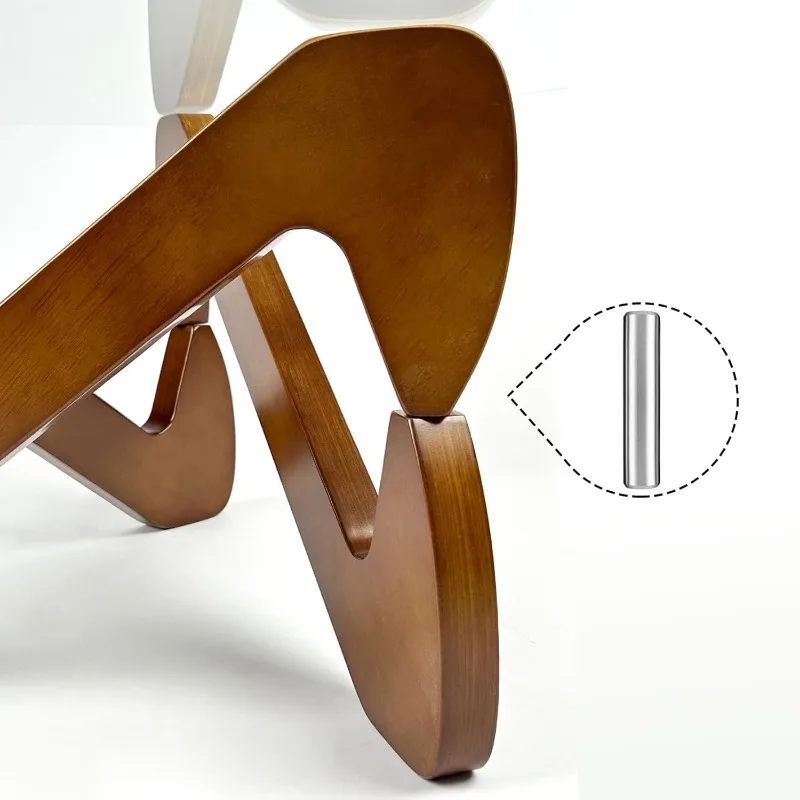Introduction: The Elegant Versatility of Glass Top Coffee Tables
Glass top coffee tables possess a unique ability to transform living spaces through their elegant transparency. With clean lines and reflective surfaces, they create a sense of openness that few other furniture pieces can achieve. The timeless appeal of glass as a material in furniture design continues to captivate homeowners and interior designers alike, offering a perfect blend of function and visual lightness.
What makes mid-century modern glass top coffee tables particularly special is their remarkable versatility. Whether your home embraces contemporary minimalism, traditional comfort, or eclectic personality, a glass coffee table can complement and enhance your existing aesthetic. Their transparent nature allows them to fit seamlessly into virtually any interior design scheme without overwhelming the space.
Beyond their stylistic adaptability, glass tables create an illusion of more space and light—a valuable quality for any living area. The transparent surface reflects both natural and artificial light, brightening rooms and making them feel more expansive. This characteristic makes glass coffee tables especially valuable in smaller spaces where bulkier furniture might feel imposing.
In recent years, glass coffee tables have experienced renewed popularity in interior design, with designers embracing both classic styles and innovative new approaches. Throughout this article, we’ll explore the many benefits of glass coffee tables, examine various types and designs, provide selection tips, share styling ideas, cover maintenance best practices, and highlight current trends to help you choose the perfect centerpiece for your living space.
Why Choose a Glass Top Coffee Table? 5 Compelling Benefits
Glass coffee tables remain consistently popular for good reasons—they offer practical advantages alongside their aesthetic appeal. These versatile pieces deliver unique benefits that other materials simply cannot match, making them excellent choices for many different living situations.
Visual Expansion: Creating the Illusion of Space
Glass coffee tables visually expand your room by maintaining sightlines and avoiding the visual weight of solid materials. Unlike wooden or upholstered tables that can make a room feel crowded, the transparent nature of glass creates an airy, open feeling. This quality makes glass tables particularly valuable in apartments, small living rooms, or any space where you want to maximize the sense of openness.
Light Enhancement: Brightening Your Living Area
One of the most remarkable properties of glass is how it interacts with light. Glass coffee tables reflect and distribute both natural and artificial light throughout your living space, creating a brighter, more inviting atmosphere. This reflective quality can help illuminate darker corners of a room and enhance the impact of decorative lighting features. The way light plays across a glass surface adds a dynamic, ever-changing element to your décor.
Versatile Style Compatibility: A Perfect Match for Any Décor
Few furniture pieces offer the style versatility of glass coffee tables. Their neutral transparency allows them to blend seamlessly with virtually any interior design aesthetic—from ultra-modern to traditional, industrial to coastal. Glass provides a chameleon-like ability to complement existing furniture without competing for attention. This adaptability makes glass tables excellent long-term investments that remain relevant even as your style preferences evolve over time.
Showcase Element: Highlighting Your Space’s Best Features
Glass coffee tables act as showcase pieces in two distinct ways. First, they allow beautiful flooring—whether hardwood, designer tile, or a statement area rug—to remain visible rather than hidden. Second, they draw attention to distinctive table bases, turning what might be a simple structural element into a featured design statement. This dual showcase function gives glass tables a unique advantage over solid surface alternatives.
Practical Durability: Strength That Surprises
Modern glass coffee tables offer impressive durability and practical advantages compared to common alternatives like wood. Today’s tempered glass is engineered to be remarkably strong and resistant to heat and scratches. Unlike wood surfaces that can be easily damaged by water rings or hot items, glass provides a worry-free surface for beverages, decorative objects, and everyday use. Additionally, tempered glass safety features ensure that if breakage does occur (which is rare), the glass crumbles into small, relatively harmless pieces rather than dangerous shards.
Exploring Different Types: Finding Your Perfect Glass Coffee Table Style
Understanding the various types of glass coffee tables available helps tremendously when selecting the perfect piece for your home. Each variation offers distinct advantages and aesthetic qualities that can enhance different living spaces and complement your existing furniture.
By Shape: Form Follows Function
The shape of your glass coffee table significantly impacts both its functionality and visual effect in your space:
Round: Round glass tables feature soft, flowing lines that create a welcoming atmosphere perfect for conversation areas. Their absence of sharp corners makes them ideal for homes with children or in spaces with tight traffic patterns. Round tables tend to promote more intimate gatherings and work beautifully in smaller seating arrangements.
Rectangular: The classic rectangular coffee table design offers maximum surface area and pairs exceptionally well with standard sofas. These tables provide ample space for books, decorative objects, and serving items. Their proportions typically follow the golden ratio, creating a visually pleasing balance with most seating arrangements.
Oval: Offering an elegant compromise between round and rectangular shapes, oval glass tables feature the flowing lines of round tables while providing more usable surface area. Their curved edges promote smooth traffic flow around the piece while still accommodating standard sofa proportions.
Square: Square coffee table configurations present balanced proportions that work beautifully with sectionals or paired loveseats. They create a sense of stability and order in a room and can help define conversation areas in larger spaces. Square tables often feature interesting symmetrical base designs that look appealing from all angles.
Unique Shapes: Geometric or free-form designs serve as statement pieces in contemporary settings. Triangular, hexagonal, or asymmetrical glass tables add visual interest and can become conversation-starting focal points in your living room.
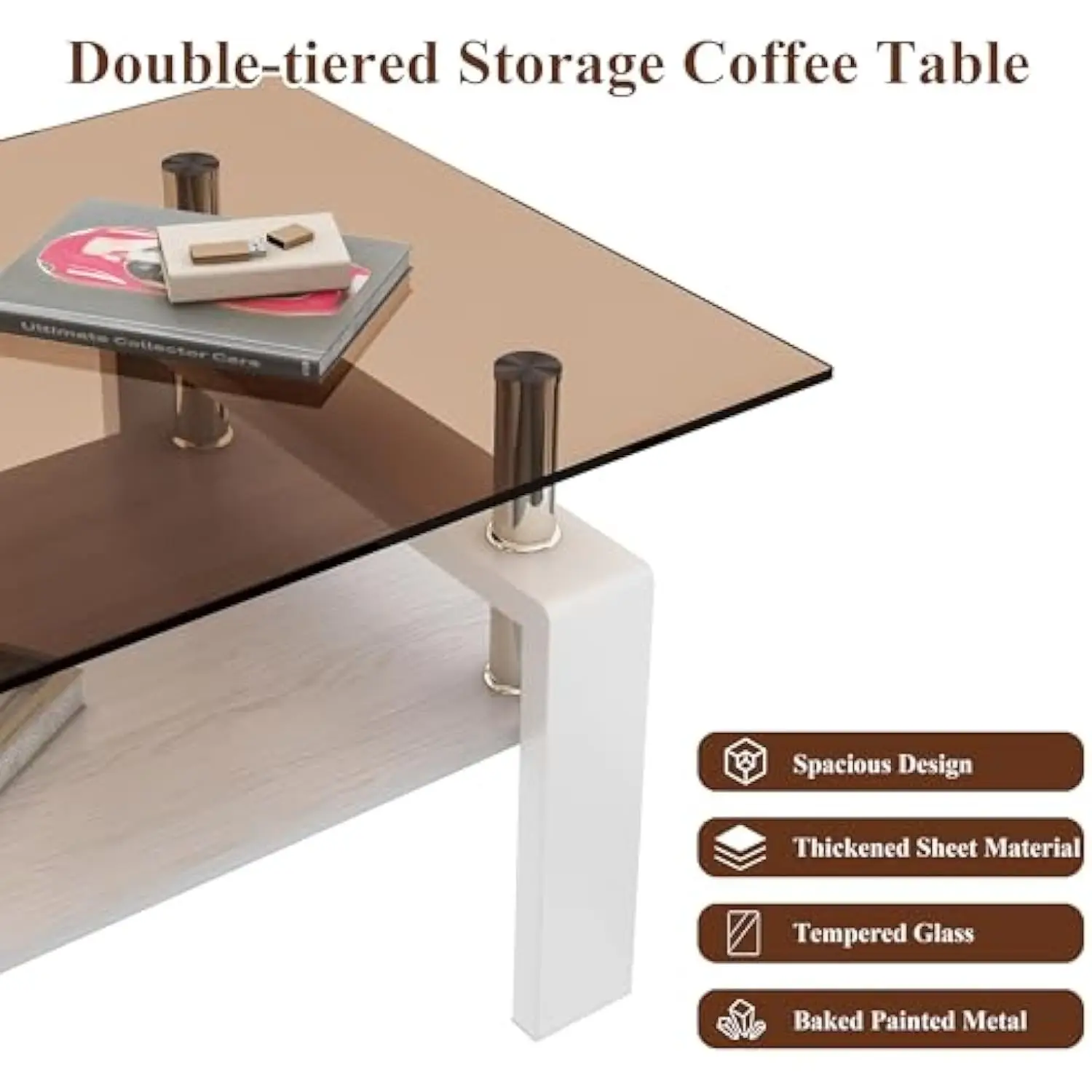
By Base Material & Design
The base of a glass coffee table dramatically influences its overall character and how it relates to your existing décor:
Metal Bases: Depending on the finish, metal-based glass tables can evoke contemporary, industrial, or glamorous aesthetics. Chrome and stainless steel create sleek, modern looks, while brass and gold tones add warmth and sophistication. Blackened or antiqued metals offer industrial charm with timeless appeal.
Wooden Bases: Wood introduces a warm, natural element that can be rustic, traditional, or distinctively mid-century depending on the treatment. Oak, walnut, and teak are particularly popular choices for adding organic texture and warmth to balance the coolness of glass.
Stone/Marble Bases: Marble top and stone-based designs introduce luxurious, substantial foundation elements. These materials create a sense of permanence and sophistication while offering interesting textural contrasts with the glass surface.
Acrylic/Glass Bases: Ultra-modern and visually lightweight, these bases maximize visual openness and create an almost floating appearance for the glass top. They’re perfect for minimalist spaces or rooms where you want to minimize visual disruption.
Sculptural Art Bases: Some glass coffee tables feature bases designed as functional art pieces. These distinctive foundations transform the table into a statement piece that serves as both furniture and sculpture.
By Glass Variation
The glass itself can vary significantly, creating different aesthetic effects:
Clear Glass: Classic and maximally transparent, clear glass offers timeless appeal and the greatest sense of lightness and openness.
Tinted/Smoked Glass: These sophisticated options add depth and mood to a space. Smoke, bronze, or blue tints create visual interest while maintaining transparency.
Frosted Glass: This treatment creates a softer, diffused look that conceals fingerprints and smudges more effectively than clear glass. It provides a more subtle transparency while still allowing light to pass through.
Etched/Patterned Glass: Decorative patterns or textures on the glass surface itself add artistic interest and uniqueness to your table. These can range from subtle geometric designs to bold artistic statements.
The wonderful diversity of popular glass top coffee table designs ensures there’s a perfect match for any living space, regardless of your style preferences or practical requirements.
Functional Features: Glass Coffee Tables That Work As Hard As They Look Good
Modern glass coffee tables combine striking aesthetics with practical functionality, offering solutions to everyday living challenges while maintaining their elegant appeal. Today’s designs recognize that furniture must work hard in our multi-purpose living spaces.
Storage Solutions
Glass tables with thoughtful storage features help maintain orderly living rooms:
Lower Shelves: Many glass coffee tables incorporate a second shelf beneath the glass top. These shelves provide perfect display space for coffee table books, magazines, and decorative items while keeping them easily accessible. The contrast between the solid lower shelf and transparent top creates visual interest.
Drawers: Some designs cleverly incorporate drawers for concealed storage without disrupting the table’s clean lines. These hidden compartments are perfect for remote controls, coasters, gaming controllers, and other small items that tend to create visual clutter.
Compartmentalized Tops: Innovative split-level or compartmentalized glass tops create designated areas for display versus function, allowing you to showcase decorative objects in one section while reserving another for practical use.

Versatile Configurations
Adaptable glass table designs accommodate changing needs:
Nesting Tables: Nesting table configurations provide flexible surface options that can be expanded when entertaining guests or compacted for everyday use. These space-saving solutions typically feature two or more coordinated tables that tuck neatly together.
Expandable Designs: Some glass coffee tables incorporate clever mechanisms that allow them to expand in surface area or height, transforming from coffee tables to dining surfaces or work areas as needed.
Modular Systems: These innovative designs feature components that can be rearranged to create different configurations, allowing you to adapt your furniture to different activities or room layouts without purchasing multiple pieces.
Multi-purpose Functions
Sophisticated features enhance the utility of glass coffee tables:
Lift-Top Mechanisms: Lift-top coffee table designs feature ingenious mechanisms that allow the surface to rise and extend toward your seating position. This transformation creates an instant work surface for laptops, a convenient dining area for casual meals, or a comfortable height for board games. The practical applications of lift-top coffee tables make them especially valuable in smaller homes or multi-purpose spaces.
Height-Adjustable Designs: Similar to lift-tops but with different mechanisms, these tables can be raised or lowered entirely, allowing them to serve different functions throughout the day.
Built-In Features: The most innovative glass coffee tables incorporate modern conveniences like built-in charging stations for devices, integrated LED lighting, or even refrigerated compartments for beverages.
These functional features demonstrate how today’s glass coffee tables can be both beautiful design elements and hardworking furniture pieces that enhance your daily living experience.
Finding the Perfect Match: A Comprehensive Selection Guide
Selecting the ideal glass coffee table involves considering multiple factors beyond mere aesthetics. This comprehensive guide will help you navigate the selection process with confidence, ensuring your new table fits perfectly within your space and lifestyle.
Size and Proportion: Getting the Dimensions Right
Proper sizing creates visual harmony and functional comfort:
Length Guidelines: For optimal visual balance, choose a coffee table approximately two-thirds the length of your sofa. This proportion creates a pleasing relationship between the pieces without overwhelming the seating area.
Height Considerations: The most comfortable and visually appealing height for your coffee table is even with your sofa seat cushions or 1-2 inches lower. This height allows for easy access to items on the table while maintaining proper proportion.
Clearance Recommendations: Maintain 14-18 inches of space between your glass coffee table and seating to allow comfortable legroom while keeping the table within easy reach. This spacing creates a functional conversation area that feels neither cramped nor disconnected.
Room Traffic Flow: Ensure at least 30 inches for walkways around the table to accommodate comfortable movement throughout the room. Layout tips for glass coffee tables emphasize that proper clearance prevents your beautiful table from becoming an obstacle.
Special Arrangements: For sectionals or unusual room layouts, consider the specific shape of your seating. L-shaped sectionals often work best with round or square tables positioned at the corner intersection, while U-shaped arrangements may benefit from rectangular tables that provide accessible surface area to all seats.
Matching Your Interior Design Style
Your glass coffee table should complement your existing aesthetic:
For Minimalist Spaces: Look for clean lines and simple geometric bases that emphasize the glass’s transparency. Less is more in these settings, with the table’s form being as important as its function.
For Modern Interiors: Consider tables with innovative materials or asymmetrical designs that make a contemporary statement while maintaining a clean overall look.
For Traditional Settings: Seek out glass tables with classic base materials like wood with turned details or metals with traditional finishes that reference historical design elements.
For Eclectic Spaces: Glass tables can serve as neutral anchors that allow more expressive furniture pieces to shine, or choose bases with distinctive character that add to your collected look.
Creating Cohesion: Look for elements in your glass table that echo existing materials, colors, or shapes in your room. This creates subtle connections that make a space feel thoughtfully designed rather than randomly assembled.
Lifestyle Considerations
Your daily living patterns should influence your selection:
Safety Factors: Homes with young children or active pets might benefit from small coffee tables with rounded corners and tempered glass for added safety. Tempered glass is heat-resistant and breaks into small, relatively harmless pieces rather than sharp shards if damaged.
Durability Needs: High-traffic or multi-purpose spaces require tables with sturdy construction and thicker glass (at least 10mm). Consider how the table will be used daily—not just how it looks—when making your selection.
Maintenance Considerations: If you prefer low-maintenance furniture, opt for clear glass with simple lines that’s easy to clean, or consider frosted glass that shows fewer fingerprints and smudges.
By carefully considering these factors, you’ll select a glass coffee table that not only looks beautiful in your space but also functions perfectly for your lifestyle and needs.
Expert Styling: How to Decorate Your Glass Coffee Table
Styling a glass coffee table presents unique opportunities and challenges compared to solid-surface tables. The transparent nature of glass requires thoughtful decoration to create visual interest without overwhelming the elegant simplicity of the table itself. These expert styling approaches will help you create a beautiful, balanced arrangement.
Foundational Principles
Master these core concepts for successful glass table styling:
Thoughtful Restraint: The transparent beauty of glass is easily overwhelmed by too many objects. Exercise restraint in your styling, allowing negative space to showcase the table’s own design. Remember that less is often more when decorating glass surfaces.
Creating Visual Weight: Balance the lightness of glass with objects that provide visual anchor points. Books, substantial decorative objects, or trays help create a sense of grounding and prevent the arrangement from feeling insubstantial.
Material Balance: Incorporate soft elements like fabric-covered books or organic materials to balance the hard, cool surface of glass. This textural contrast creates visual and tactile interest that makes your space more inviting.
Creating Visual Interest Through Layering
Build dimension and depth through strategic layering:
Anchoring with Trays: Decorative trays create defined zones on your glass surface while visually grouping smaller items. Look for trays in materials that complement your table base—metallic finishes, wood tones, or textured materials all create beautiful contrasts with glass.
Height Variation: Create visual rhythm by varying the height of your decorative elements. Stack books as platforms for smaller objects, incorporate taller items like candlesticks or small vases, and include low elements that hug the glass surface.
Material Mixing: Combine different textures and materials to create rich visual interest—pair smooth ceramics with rough natural elements, glossy metals with matte surfaces, or geometric shapes with organic forms. This diversity of materials creates a layered, collected look.
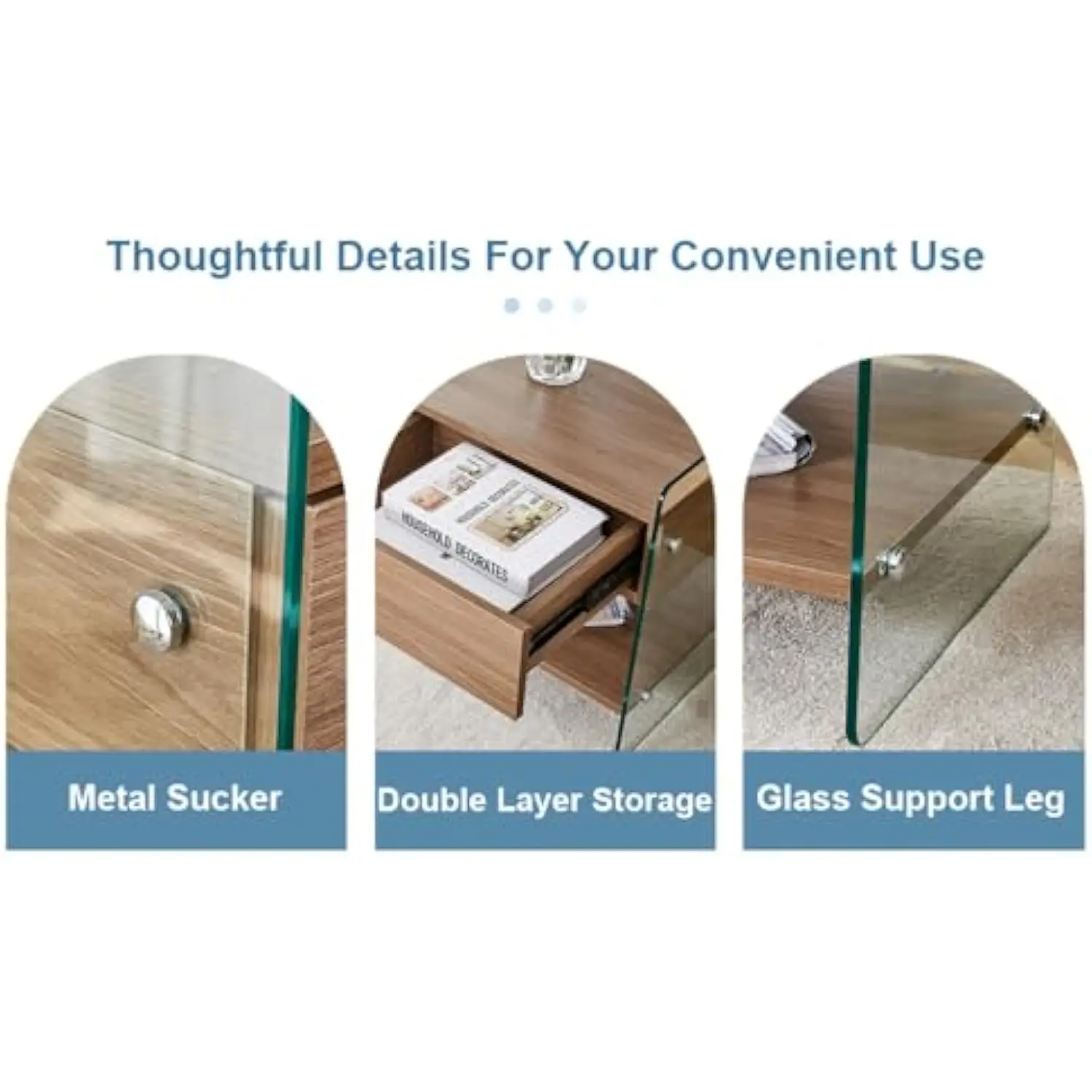
Styling Formulas That Work
Follow these proven arrangements for foolproof results:
The Rule of Three: Group objects in odd numbers (especially threes) for a balanced yet dynamic arrangement. The human eye finds odd-numbered groupings more interesting and natural than even-numbered sets.
The Perfect Stack: Create a classic vignette by starting with a stack of 2-4 beautiful books (varying sizes works best), topped with a decorative object, and finished with a small natural element like a stone or small plant. This combination creates instant visual harmony.
The Complete Arrangement: For a fuller styling approach, start with a tray to anchor your arrangement, then add: one tall item (like a candlestick or vase), one medium-height item (such as a small sculpture), and one low item (like a decorative box or small bowl). This variation in scale creates visual movement across your table surface.
Style-Specific Approaches
Adapt your styling to complement your interior design aesthetic:
Modern Minimalist: Embrace negative space with just 1-3 sculptural objects that make a strong statement. Look for pieces with strong geometric forms or interesting materials that can stand alone as artistic elements.
Organic Natural: Incorporate elements like wood slices, stone objects, potted succulents, or fresh flowers to bring life and texture to your glass surface. These natural elements soften the sleekness of glass with their organic imperfections.
Curated Collector: Display a thoughtfully edited selection of collectibles or treasured objects that tell your personal story. Glass tables excel at showcasing special pieces, acting almost like a museum display case for your meaningful items.
Seasonal Styling: Refresh your table display throughout the year with seasonal elements—spring branches, summer shells, autumn leaves, or winter evergreens can all bring timely touches to your styling.
Mastering the art of styling glass coffee tables involves understanding that the table itself is part of the display. The best glass coffee table decor approaches celebrate rather than conceal the transparent beauty of the glass while creating visual interest through thoughtful arrangement.
Mid-Century Modern Solid Wood Coffee Tables, Mid-Century Modern Teak Coffee Tables
$879.95 Select options This product has multiple variants. The options may be chosen on the product pageMid-Century Modern Danish Coffee Tables, Mid-Century Modern Oval Coffee Tables, Mid-Century Modern Solid Wood Coffee Tables
$390.05 Select options This product has multiple variants. The options may be chosen on the product pageMid-Century Modern Coffee & End Table Sets, Mid-Century Modern Coffee Table Sets, Mid-Century Modern Oval Coffee Tables
Price range: $257.48 through $331.04 Select options This product has multiple variants. The options may be chosen on the product pageMid-Century Modern Glass Top Coffee Tables, Mid-Century Modern Glass Top Side & End Tables
$460.58 Select options This product has multiple variants. The options may be chosen on the product pageMid-Century Modern Glass Top Coffee Tables, Mid-Century Modern Vintage Coffee Tables, Mid-Century Modern Vintage Side & End Tables
$725.36 Select options This product has multiple variants. The options may be chosen on the product pageMid-Century Modern Lift Top Coffee Tables, Mid-Century Modern Square Coffee Tables
$454.73 Select options This product has multiple variants. The options may be chosen on the product page
Crystal Clear: Maintenance Tips for Long-lasting Beauty
Proper care preserves both the clarity and structural integrity of your glass coffee table, ensuring it remains a beautiful focal point in your living space for years to come. These maintenance guidelines will help you keep your table looking its best with minimal effort.
Daily Care Routines
Simple habits that preserve your table’s appearance:
Dusting Technique: Use a soft microfiber cloth to dust your glass surface regularly—ideally daily in high-traffic homes. Microfiber attracts and holds dust particles rather than simply moving them around, making it more effective than paper towels or regular cloths.
Managing Fingerprints: Keep a small microfiber cloth nearby to quickly address fingerprints and smudges as they occur. This prevents oils from accumulating and becoming harder to remove later.
Protective Practices: Use coasters for beverages, placemats for serving food, and felt pads on the bottom of any decorative objects that might scratch the surface. These simple precautions prevent marks and damage that could permanently mar your table.
Cleaning Methods and Products
Effective approaches for deeper cleaning:
Recommended Cleaners: Choose ammonia-free glass cleaners specifically formulated for furniture rather than window cleaners, which may contain additives that leave streaks on horizontal surfaces. For an effective DIY alternative, mix equal parts white vinegar and water in a spray bottle.
Application Technique: Spray cleaning solution onto your microfiber cloth rather than directly onto the glass. This prevents excess liquid from seeping into edges or joints and potentially damaging the table base or adhesives.
Streak Prevention: Clean your glass table when it’s not in direct sunlight, as heat can cause cleaners to dry too quickly and leave streaks. For a perfect finish, use one cloth with cleaner to remove dirt and a second dry cloth to buff the surface to a streak-free shine.
Special Glass Types: For tinted, frosted, or etched glass, avoid abrasive cleaners that might damage the finish. Use gentler cleaning solutions and soft cloths, applying minimal pressure during cleaning.
Preventing and Addressing Damage
Protective measures and damage control:
Scratch Avoidance: Never slide objects across your glass surface—always lift and place them instead. Keep keys, metal objects, and abrasive materials away from your table to prevent accidental scratching.
Weight Distribution: Though tempered glass is strong, avoid placing extremely heavy objects on your table, and never concentrate weight in one small area. Distribute heavier items across the surface or place them near the edges where the glass has more structural support.
Damage Response: If small scratches occur, some can be minimized (though rarely eliminated completely) with commercial glass polishing compounds designed for furniture. For chips or cracks, contact a professional immediately, as damaged tempered glass can be unsafe.
Professional Maintenance: Consider having a glass professional clean and inspect your table annually if it’s a valuable piece. They can polish out minor imperfections and ensure all hardware and supports remain in good condition.
Implementing these safety tips for glass coffee tables and maintenance practices will ensure your glass coffee table remains a beautiful, functional focal point in your living space for many years. With proper care, glass furniture can remain pristine and elegant despite daily use.
On-Trend: Current and Emerging Glass Coffee Table Designs
Glass coffee table design continues to evolve as designers explore new possibilities and respond to changing lifestyles and aesthetic preferences. Understanding current trends can help you select a piece that feels fresh and contemporary while still offering timeless appeal.
Contemporary Design Movements
Modern approaches pushing the boundaries of glass table design:
Minimalist Sophistication: Ultra-thin glass profiles supported by nearly invisible structures create tables that appear to float in space. These designs emphasize the magical transparency of glass by reducing visual interruption from bases or supports, resulting in pieces that make a statement through their ethereal quality rather than bold structural elements.
Organic Forms: Moving beyond traditional geometric shapes, designers are embracing flowing, asymmetrical forms inspired by nature. These biophilic designs feature curved glass with soft edges and natural inspirations, creating pieces that feel both contemporary and timeless.
Art Deco Revival: Bold geometric shapes and dramatic proportions reference the glamorous Art Deco era while incorporating modern materials and construction techniques. These designs feature strong angular elements, luxurious materials, and statement-making combinations of glass with brass, marble, or richly colored metals.
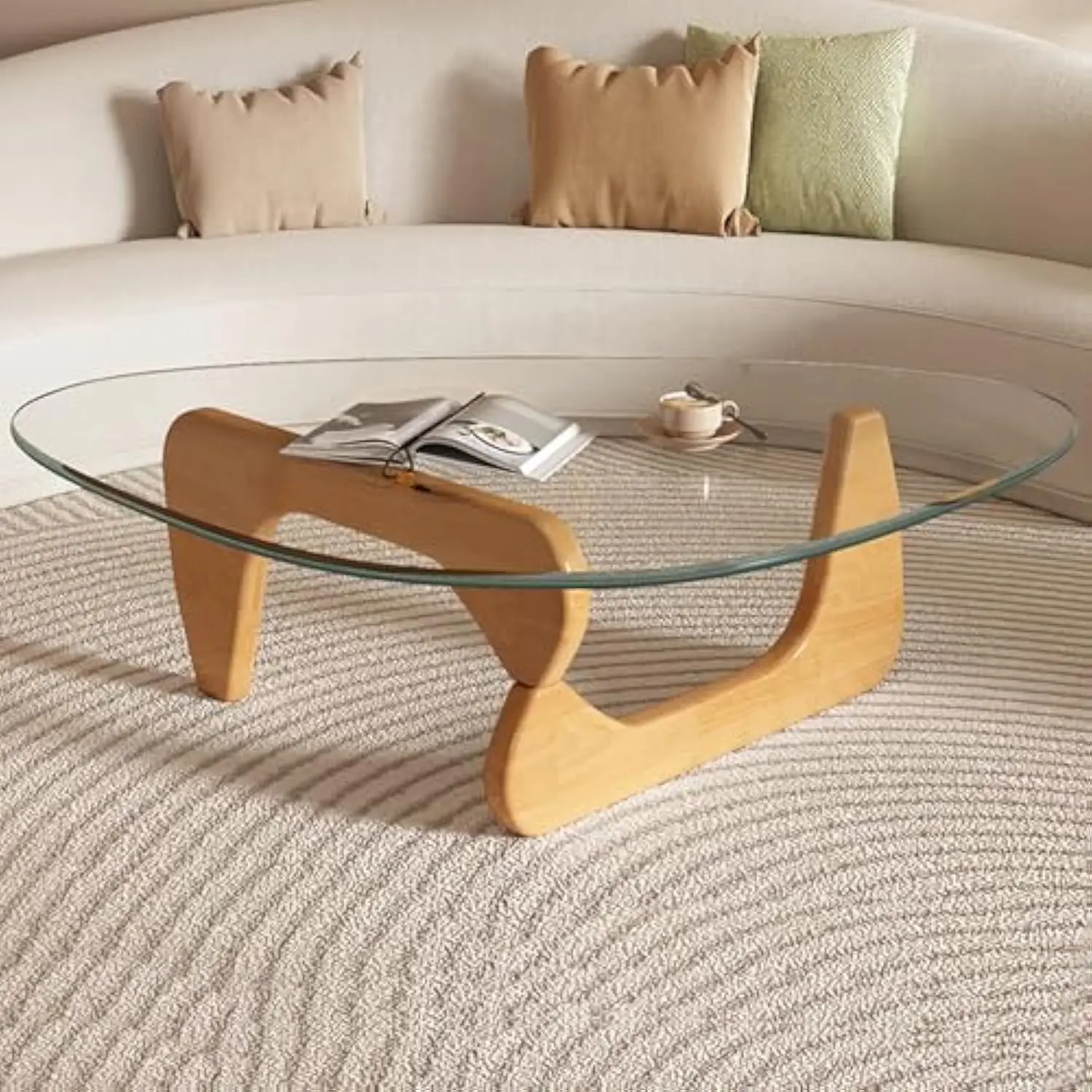
Material Combinations Gaining Popularity
Innovative pairings creating distinctive design statements:
Mixed Media Exploration: Contemporary tables increasingly combine glass with unexpected materials like concrete, terrazzo, or reclaimed wood. These combinations create dynamic tension between the transparency of glass and the substantial character of more tactile materials.
Natural Element Integration: The warmth of natural materials balances the cool precision of glass in trending designs. Look for combinations of glass with richly grained woods, raw stone elements, or metals with natural patinas that add organic character and visual depth.
Contrasting Textures: Modern glass top coffee table designs emphasize textural contrast by pairing smooth glass with highly textured bases. Rough-hewn stone, hammered metals, woven materials, or sculptural elements with pronounced texture create multi-sensory pieces that invite both visual and tactile appreciation.
Functional Innovations
Forward-thinking approaches addressing contemporary living needs:
Smart Feature Integration: The latest designs incorporate technology seamlessly into glass coffee tables. Look for embedded wireless charging stations, touch-sensitive lighting controls, or even temperature-controlled compartments that add functionality without compromising clean design.
Sustainable Approaches: Eco-conscious design emphasizes recyclable materials, sustainably harvested woods, and production methods with minimal environmental impact. Some designers are exploring recycled glass or innovative sustainable materials as alternatives to traditional manufacturing processes.
Adaptable Designs: Responding to smaller living spaces and multi-functional rooms, space-saving nesting coffee tables and transformable designs offer flexibility for modern lifestyles. These clever pieces can expand, contract, raise, lower, or reconfigure to serve different purposes throughout the day.
These evolving design trends reflect both aesthetic innovation and practical responses to changing lifestyles. The best contemporary glass coffee tables incorporate elements that feel current and fresh while maintaining the timeless elegance that makes glass furniture a perennial favorite in thoughtful interior design.
The Perfect Complement: Pairing Furniture and Accessories with Glass Coffee Tables
Creating a cohesive living space around your glass coffee table involves thoughtfully selecting complementary furniture and accessories. The transparent nature of glass allows it to work harmoniously with many styles, but certain pairings particularly enhance its elegant qualities.
Seating Selections
Choosing seating that creates balance with your glass coffee table:
Sofa and Chair Styles: Upholstered seating with visible legs creates an open, airy feeling that complements the transparency of glass. Mid-century modern sofas, track-arm designs, or pieces with tapered legs maintain visual space beneath the furniture, continuing the light, open aesthetic of your glass table.
Upholstery Considerations: Balance the cool, hard surface of glass with textural upholstery fabrics. Bouclé, velvet, or textured weaves add warmth and depth that counterbalance the sleekness of glass. Consider upholstery colors that either complement or purposefully contrast with your table base for a cohesive look.
Conversation Arrangements: Position seating to create an intimate conversation area around your glass coffee table. The transparent nature of glass allows sightlines to remain open, facilitating interaction while maintaining a sense of spaciousness even in cozy arrangements.
Area Rug Recommendations
Anchoring your glass table with the right foundation:
Framing Effect: Area rugs act as frames that highlight glass coffee tables rather than competing with them. Choose a rug large enough to extend at least 18-24 inches beyond all sides of the table, unifying your seating arrangement.
Texture and Pattern: Glass tables showcase the beauty of textured or patterned rugs by allowing them to remain fully visible. Consider high-pile rugs, interesting weaves, or subtle patterns that add visual interest beneath your transparent table top.
Size and Placement: Center your rug in the seating area with the front legs of all seating pieces placed on the rug. This creates a defined conversation zone with your glass coffee table as the natural focal point.
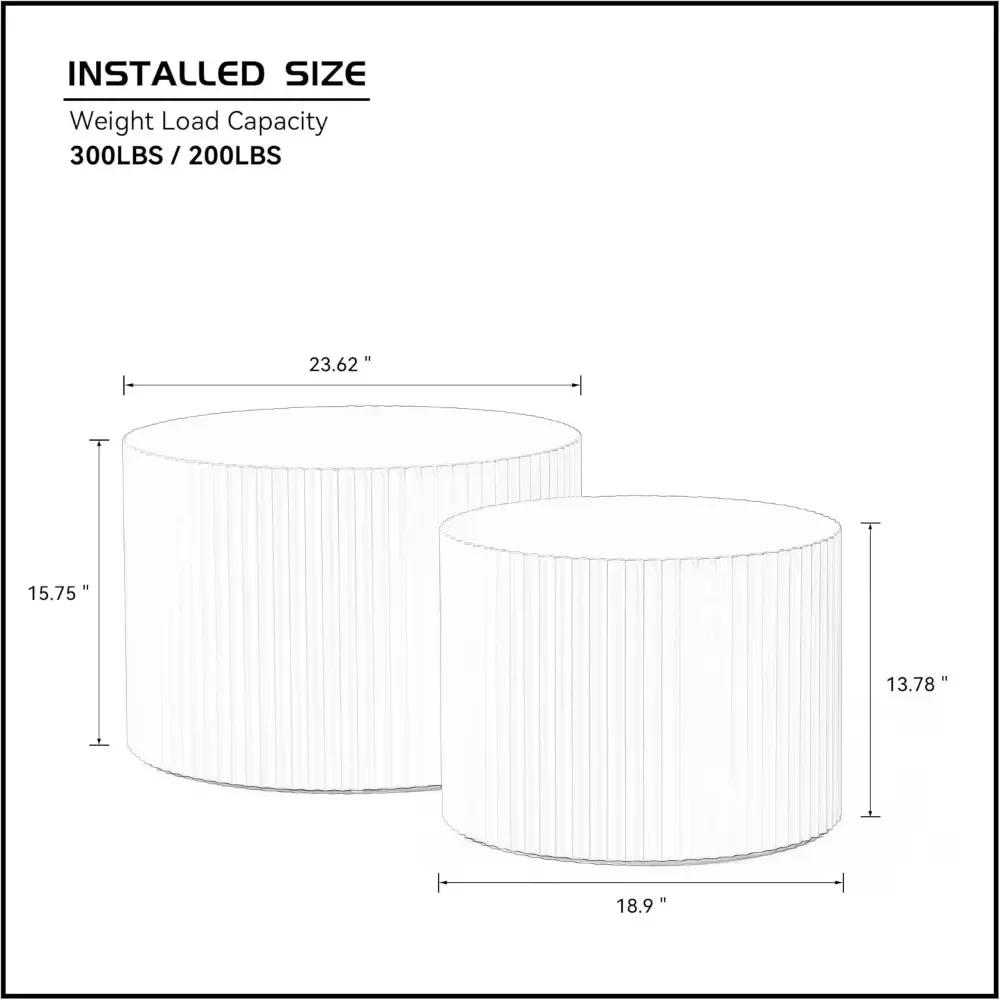
Complementary Side Tables and Accent Furniture
Creating cohesion without matching exactly:
Coordinated Collections: Rather than exact matching, consider coffee and end table sets that share design elements while maintaining visual interest through slight variations. This creates a thoughtfully curated look rather than a rigid matched set.
Material Echo Strategy: Select complementary side tables that incorporate materials found in your glass coffee table’s base. For example, if your coffee table features a walnut base, choose side tables with walnut elements to create subtle connections throughout the room.
Scale Consideration: Balance larger glass coffee tables with slightly smaller side tables that don’t compete for attention. The transparency of glass allows it to occupy a larger footprint without overwhelming the space, while more substantial side tables can provide visual anchoring.
Lighting Elements
Enhancing the reflective qualities of glass through thoughtful lighting:
Reflective Enhancement: Strategic lighting brings out the magical qualities of glass. Position table or floor lamps to create beautiful reflections and refractions on your glass surface, especially in evening settings when these effects become more pronounced.
Complementary Lamp Selection: Choose lamps with bases that relate to your glass coffee table’s supporting structure. For example, pair a brass-based glass coffee table with lamps that incorporate similar metallic elements for a cohesive material story.
Placement Strategy: Position lamps to illuminate your glass table from different angles, reducing harsh glare while maximizing the table’s reflective properties. Diffused lighting creates a warm, inviting atmosphere that balances the cooler qualities of glass.
Glass coffee tables work exceptionally well in open concept spaces where maintaining visual flow is important. Their transparent nature preserves sightlines while still defining distinct functional zones within larger areas. By thoughtfully selecting complementary furniture and accessories, you’ll create a harmonious living space where your glass coffee table serves as both a functional centerpiece and an elegant design element.
Conclusion: Reflecting Your Style with a Glass Coffee Table
Glass coffee tables offer an enduring appeal that transcends passing trends, combining practical functionality with sophisticated elegance. Their remarkable visual lightness creates an airy, open feeling that enhances spaces of all sizes, while their reflective properties amplify light and showcase your flooring, rug, or distinctive base design.
The versatility of glass coffee tables remains one of their greatest strengths. Whether your home embraces sleek contemporary minimalism, classic traditional warmth, or eclectic personality, a thoughtfully selected glass table can complement and enhance your existing aesthetic. This adaptability makes glass tables excellent long-term investments that remain relevant even as your style evolves over time.
Beyond their beauty, glass coffee tables offer practical advantages that make daily living more enjoyable. Their heat-resistant, easy-to-clean surfaces withstand the rigors of regular use while maintaining their pristine appearance with minimal maintenance. Modern tempered glass provides safety and durability that matches or exceeds many other furniture materials.
As you consider the various options presented throughout this article, remember that the perfect coffee table for your space is one that balances your aesthetic preferences with your practical needs. Whether you’re drawn to a minimalist float-glass design, a sculptural art piece with a glass top, or a functional table with storage features, there’s a glass coffee table that perfectly reflects your personal style.
A thoughtfully chosen glass coffee table does more than fill space in your living room—it transforms the entire atmosphere through its light-enhancing properties, creates a sophisticated focal point for your seating arrangement, and provides a versatile surface for both practical use and beautiful display. With its timeless elegance and practical benefits, a glass coffee table represents an investment in both style and functionality that will enhance your living space for years to come.

